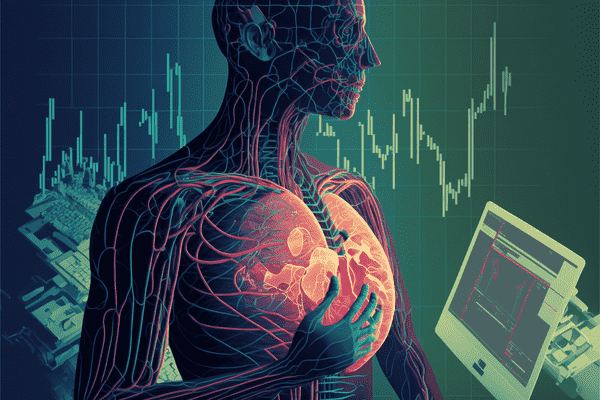The Future of ACLS: Emerging Technologies and Techniques

Advanced Cardiac Life Support (ACLS) is a life-saving medical procedure used to resuscitate the heart when it stops functioning. As technology advances, so too do the techniques and tools being developed for ACLS. In this article, we'll explore emerging technologies such as artificial intelligence (AI), advanced monitoring systems, and other innovative tools that are making ACLS safer and more effective. We will also discuss current challenges and future prospects of ACLS in light of these developments.
Overview of Advanced Cardiac Life Support (ACLS)
Advanced Cardiac Life Support (ACLS) is a medical procedure used in emergency situations to resuscitate the heart when it stops functioning. ACLS consists of a set of protocols and algorithms developed by the American Heart Association for healthcare professionals to use during cardiac arrest events. It includes chest compressions, airway management, defibrillation, medications, and other treatments that can be used to save lives. In recent years there have been major advancements in technology surrounding ACLS; such as artificial intelligence (AI), advanced monitoring systems and other innovative tools being developed with the intention of improving its effectiveness.
Current Challenges with ACLS
The current challenges associated with ACLS are numerous. For example, there is a lack of standardization among clinicians in terms of how to perform and assess the effectiveness of resuscitation attempts. This can lead to inconsistent results and ineffective treatments for cardiac arrest events. Furthermore, current monitoring systems may be limited in their ability to detect subtle changes in an individual’s vital signs or the effectiveness of resuscitation efforts. Additionally, many healthcare providers may not be adequately prepared to administer ACLS treatment due to inadequate training or education. Finally, the cost associated with advanced monitoring systems, medications and other necessary supplies can also be a barrier for some health care facilities attempting to implement ACLS protocols.
In order to address these issues, there have been recent advances in technology that can help alleviate many of these challenges. Artificial intelligence (AI) has been utilized as a tool for enhancing data collection during resuscitation attempts and developing more precise models for predicting patient outcomes. Advanced monitoring systems have also been developed that can detect even subtle changes in vital signs and provide more precise feedback about the effectiveness of treatments being administered. In addition, various educational programs are now available to increase healthcare provider competency when providing patients with ACLS treatment. Finally, research into new developments such as extracorporeal membrane oxygenation (ECMO) offer promise for more effective treatments for cardiac arrest events in the future.
Emerging Technologies for ACLS, such as AI and advanced monitoring systems

As medical technology advances, so too do the capabilities of Advanced Cardiac Life Support (ACLS). In recent years, a range of emerging technologies have been developed to assist with ACLS. These include artificial intelligence (AI), advanced monitoring systems, and other innovative tools designed to improve patient outcomes in life-threatening situations. This article will explore these developments in more detail and discuss the potential benefits and challenges associated with them.
AI has been used in ACLS to assist with diagnosis and treatment. AI-based systems can interpret cardiac rhythms, detect arrhythmias, and provide real-time warnings for potential life-threatening heart events such as ventricular fibrillation or pulmonary embolism. These technological advances have the potential to reduce time spent on diagnosing a patient’s condition, allowing medical staff to focus on providing appropriate treatment more quickly.
Advanced monitoring systems are also making impressive strides. Researchers in China have recently pioneered a groundbreaking non-contact ECG technology that integrates millimeter wave radar and AI to interpret an ECG signal. Should the researchers' initial findings be successful, this remarkable new tech could open up exciting opportunities for obtaining continuous and reliable heart health data. This would enable medical professionals to assess a patient's vital signs in real-time without having to constantly check their ECG readings, allowing for timely interventions further improving patient outcomes.
Other innovative tools such as smaller portable defibrillators have also been developed to improve the effectiveness of ACLS. These devices allow for quick and easy access to defibrillation in remote areas or during transport of a patient from one facility to another. This reduces the critical time it takes for ACLS procedures to be performed, increasing the chances of successful resuscitation and improved patient outcomes.
Despite these promising developments, there remain a number of challenges associated with ACLS that must be addressed. AI-based systems are still limited in their capabilities due to their reliance on large datasets for learning, making them vulnerable to errors if given inaccurate data. Moreover, monitoring systems can present ethical dilemmas when it comes to patient privacy and data security, while defibrillators can be costly and difficult to deploy in remote settings.
Advances in technology are continuing to drive the development of ACLS procedures. AI-based systems, advanced monitoring systems, and portable defibrillators have all been developed with the aim of improving outcome for patients in life-threatening situations. However, these emerging technologies present their own challenges that must be addressed before they can fully benefit from their potential. Moving forward, further research is needed to ensure that these developments will translate into improved patient outcomes in the future.
Potential Benefits of Using AI in ACLS Procedures
The use of artificial intelligence (AI) in Advanced Cardiac Life Support (ACLS) procedures has the potential to revolutionize the way these emergency situations are handled. AI could provide more accurate and timely diagnoses, improve patient outcomes, and reduce costs associated with resuscitation efforts. In addition, AI-assisted ACLS can help medical professionals better anticipate changes in a patient’s condition and respond quickly to any signs of distress. Furthermore, AI technologies can be used to develop sophisticated monitoring systems that alert clinicians when a patient’s heart rate is erratic or other vital signs indicate an impending cardiac event. By utilizing these advanced tools during ACLS protocols, healthcare providers can save precious time while ensuring the best possible outcome for their patients.
Online ACLS Training
The emergence of online ACLS training courses has also made ACLS more accessible and affordable. These courses allow healthcare professionals to gain ACLS certification from the comfort of their own homes, without having to attend expensive in-person classes or seminars. Online ACLS training programs provide an effective way for medical personnel to quickly learn the fundamentals of resuscitation, as well as crucial tips for handling emergency situations. The use of interactive video lectures and simulations also allows learners to practice and hone their ACLS skills before being tested on them in a real-world setting. With the help of these convenient and cost-effective online courses, ACLS certification is now attainable by a wider range of individuals than ever before.
Exploring the Possibilities for ACLS in a Technology-Driven World

As technological advances continue to be made, the potential of ACLS (Advanced Cardiac Life Support) is growing. The use of AI, advanced monitoring systems and other innovative tools are helping to improve ACLS procedures in emergency situations. These new technologies have allowed ACLS providers to respond more quickly and efficiently when a person’s heart stops beating. Online ACLS courses are also becoming increasingly popular, allowing medical professionals from all over the world to learn this lifesaving technique without having to attend an in-person class. As ACLS technology continues to evolve, there are also opportunities for better patient outcomes and improved safety.
As ACLS technology continues to advance, the potential for more precise diagnosis and treatment is growing. With AI-assisted diagnostics, ACLS providers can identify subtle changes in a person’s vital signs that may otherwise be missed. Advanced monitoring systems can also provide medical professionals with real-time information on a patient’s condition, which can help them make decisions in emergency situations. The use of telemedicine has also allowed ACLS providers to treat patients remotely, reducing their risk of exposure while still providing life-saving care.
Advances in technology are enabling ACLS providers to use more innovative tools and techniques than ever before. Point-of-care ultrasonography (POCUS) is one such technology that ACLS providers can use to quickly diagnose, monitor, and treat patients onsite. POCUS allows ACLS personnel to obtain timely information on a patient's cardiac activity and other vital signs by using ultrasound waves to visualize their internal organs. This type of imaging can provide ACLS providers with valuable information regarding the patient's condition at any given moment.
Extracorporeal membrane oxygenation (ECMO) is another tool that is being increasingly used in ACLS. ECMO provides an artificial means of delivering oxygen directly into the bloodstream during cardiac arrest or other medical emergencies. By providing supplemental oxygen delivery, ECMO can help ACLS providers increase the odds of successful resuscitation for their patients. Additionally, ECMO can reduce the amount of time a patient spends on mechanical ventilation, which could lead to better outcomes for critically ill patients.
As ACLS technology continues to evolve, new techniques and tools are emerging that can help ACLS providers achieve even better results for their patients. With these advances comes an increased importance placed on training medical professionals in current ACLS methods so that they can effectively utilize all available resources when treating critically ill or injured patients.
Conclusion
The potential benefits and limitations of ACLS technologies are becoming increasingly apparent as the field continues to evolve. From AI-assisted diagnostics to point-of-care ultrasonography (POCUS) and extracorporeal membrane oxygenation (ECMO), ACLS providers have access to a variety of tools that can help them provide more effective care in emergency situations. Online ACLS courses also allow medical professionals from all over the world to learn this lifesaving technique without having to attend an in-person class. While these advances offer great promise for improved patient outcomes, there are still some challenges associated with implementing these technologies into practice, such as cost and training requirements. In order for ACLS providers to get the most out of these new developments, they must be willing to invest time and resources into learning how best to use them. As technology continues its rapid evolution, it is clear that ACLS will continue changing in order meet the needs of modern healthcare systems around the globe.
